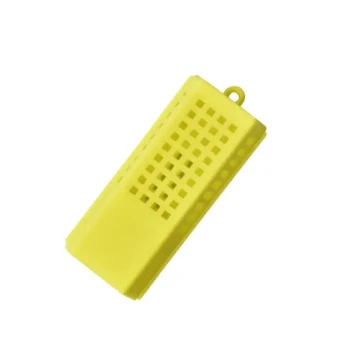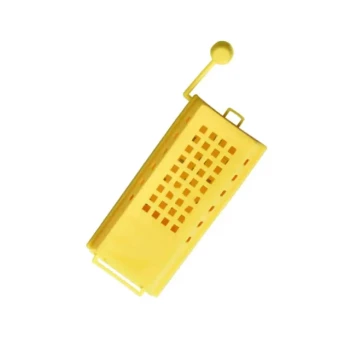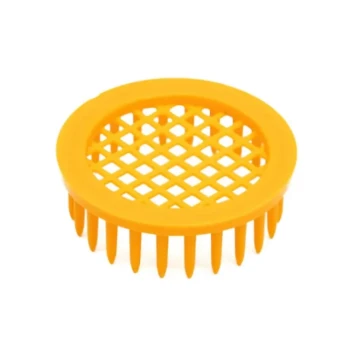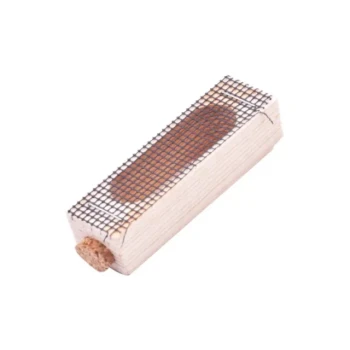No, the other bees in the hive do not notice or react to a colored mark on their queen. For the worker and drone bees, a small dot of paint on the queen's thorax is visually irrelevant. Their world is defined by scent and chemical signals, not sight, and they continue their tasks of caring for her and the colony without any change in behavior.
The core reason a marked queen goes unnoticed is that bees identify her not by sight, but by her unique chemical signature—her pheromones. A visual mark is simply outside their sensory frame of reference, making it a tool for the beekeeper, not a signal to the hive.
The Queen's True Signal: The Power of Pheromones
To understand why a visual mark is ignored, you must first understand how bees actually perceive their queen. In the dark, crowded environment of a hive, vision is a secondary sense. Communication is driven by chemistry.
The Signature Scent of Royalty
A queen bee produces a complex chemical cocktail known as Queen Mandibular Pheromone (QMP). This is her unique signature.
This pheromone blend communicates her presence, her health, and her reproductive status to the entire colony. It is the single most important factor in maintaining hive cohesion and social order.
How the Message Spreads
A small group of worker bees, called the queen's retinue, constantly surrounds her. They groom and feed her, touching her with their antennae.
In doing so, they pick up her QMP and then move throughout the hive, spreading it to other bees through contact. This constant distribution of her scent is how every bee knows a healthy, laying queen is present.
A World of Scent, Not Sight
Because bees rely on this chemical information network, a small, odorless dot of paint is simply not a significant sensory input. Their system for identifying and assessing the queen is based entirely on the pheromones she emits.
Understanding the Trade-offs and Best Practices
While the color itself is irrelevant to the bees, the act of marking a queen is not without risk. The danger lies not in the visual mark, but in the potential for scent contamination.
The Risk of a Foreign Scent
The primary reason a hive might reject a newly marked queen is because the paint's odor masks her natural pheromones. If her chemical signal is obscured by a strong, foreign smell, the workers may no longer recognize her as their queen.
This can lead to them balling her—a process where they surround and kill her—out of a perceived need to replace a "failed" or foreign queen.
The Importance of Proper Technique
To avoid rejection, beekeepers must use specialized, non-toxic marking pens designed for this purpose. These paints are formulated to be low-odor and quick-drying.
The mark must be applied carefully as a small dot on the thorax (the middle section of her body), avoiding her head, antennae, and wings. This minimizes stress and ensures her vital functions are not impaired.
The International Queen Bee Marking Colors
For beekeepers, marking is an invaluable management tool. A standardized color code, which rotates on a five-year cycle, allows a beekeeper to know the year the queen hatched at a single glance.
The color sequence is: White (or Grey), Yellow, Red, Green, and Blue, corresponding to years ending in 1/6, 2/7, 3/8, 4/9, and 5/0, respectively.
Applying This to Your Hive Management
Understanding the principles behind queen marking allows you to use it as a safe and effective tool.
- If your primary focus is hive stability: A properly applied mark has no negative impact on the colony's social structure or their acceptance of the queen.
- If your primary focus is efficient inspections: Marking the queen is the single best way to locate her quickly, confirm she is still present, and assess her age.
- If your primary focus is queen safety: Always use purpose-made marking pens and apply the paint carefully to the thorax only, allowing it to dry before she is returned to the colony.
By respecting the hive's chemical-based communication, beekeepers can use visual marks to their advantage without disrupting the colony's natural harmony.
Summary Table:
| Key Insight | Why It Matters |
|---|---|
| Primary Identification Method | Bees recognize their queen by her unique pheromones (QMP), not visual cues. |
| Marking Risk | The main danger is scent contamination from the paint, not the color itself. |
| Beekeeper Benefit | A visual mark allows for quick identification of the queen's presence and age during inspections. |
Simplify your hive management with the right tools from HONESTBEE. As a trusted supplier for commercial apiaries and beekeeping equipment distributors, we provide the specialized, low-odor queen marking pens and other essential supplies you need to work efficiently and safely with your colonies. Let our wholesale-focused operations support your success. Contact our expert team today to discuss your beekeeping supply needs!
Visual Guide
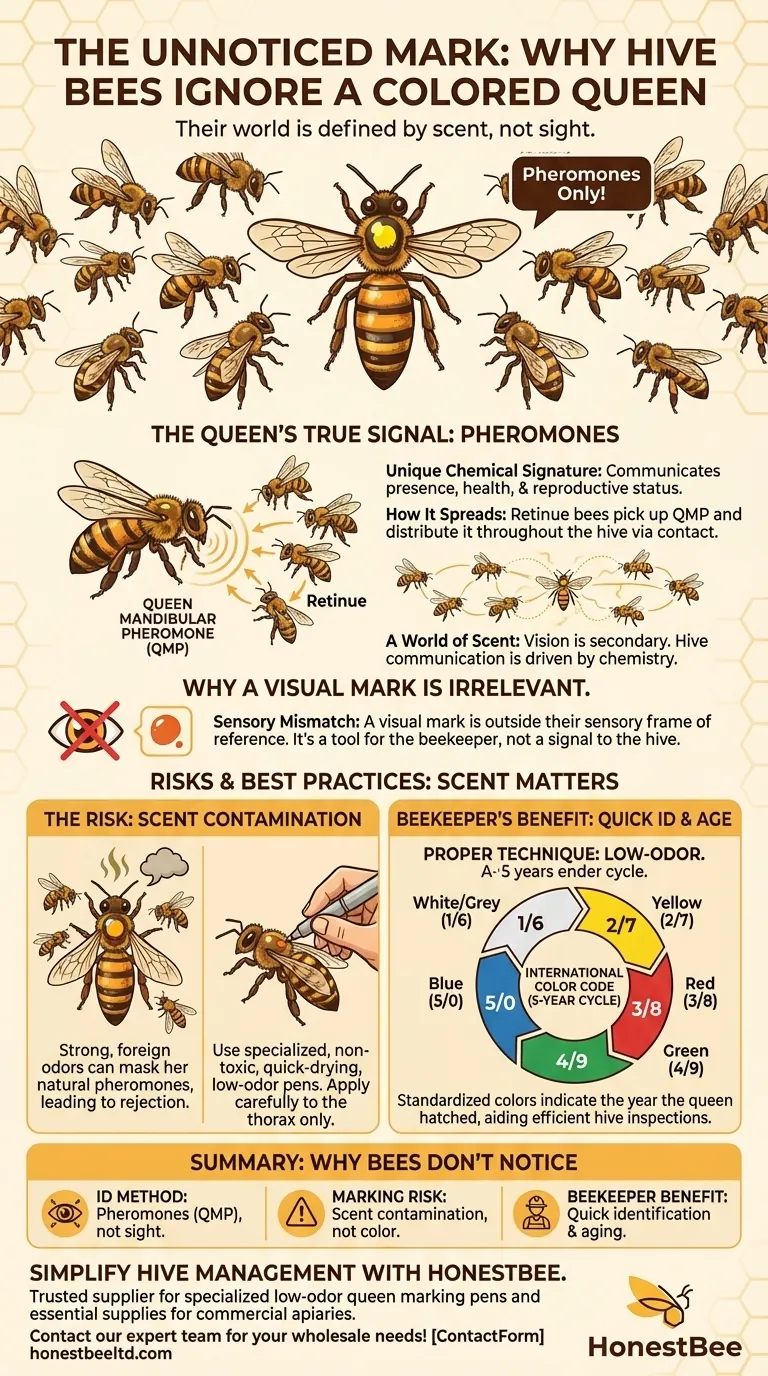
Related Products
- Queen Bee Marking Pen POSCA Queen Marking Pens for Beekeeping Bee Markers
- Queen Bee Marking Pen UNI Medium Point for Queen and Bee Marking
- Jenter Queen Rearing Kit Complete Set for Bee Breeding
- No Grafting Queen Rearing Kit: System for Royal Jelly Production and Queen Rearing
- Nicot Queen Rearing Kit for Beekeeping and Grafting in Nicot System
People Also Ask
- What are the advantages of marking a queen bee? Achieve Precision and Confidence in Hive Management
- What type of markers are commonly used for marking Queen bees? Choose the Safe, Non-Toxic Standard
- What are the benefits of marking a Queen bee for hive management? Boost Efficiency & Colony Health
- What is the purpose of a queen marking pen in beekeeping? Essential for Efficient Hive Management
- What are the benefits of learning to mark your own queen bees? Boost Your Apiary's Efficiency and Confidence





